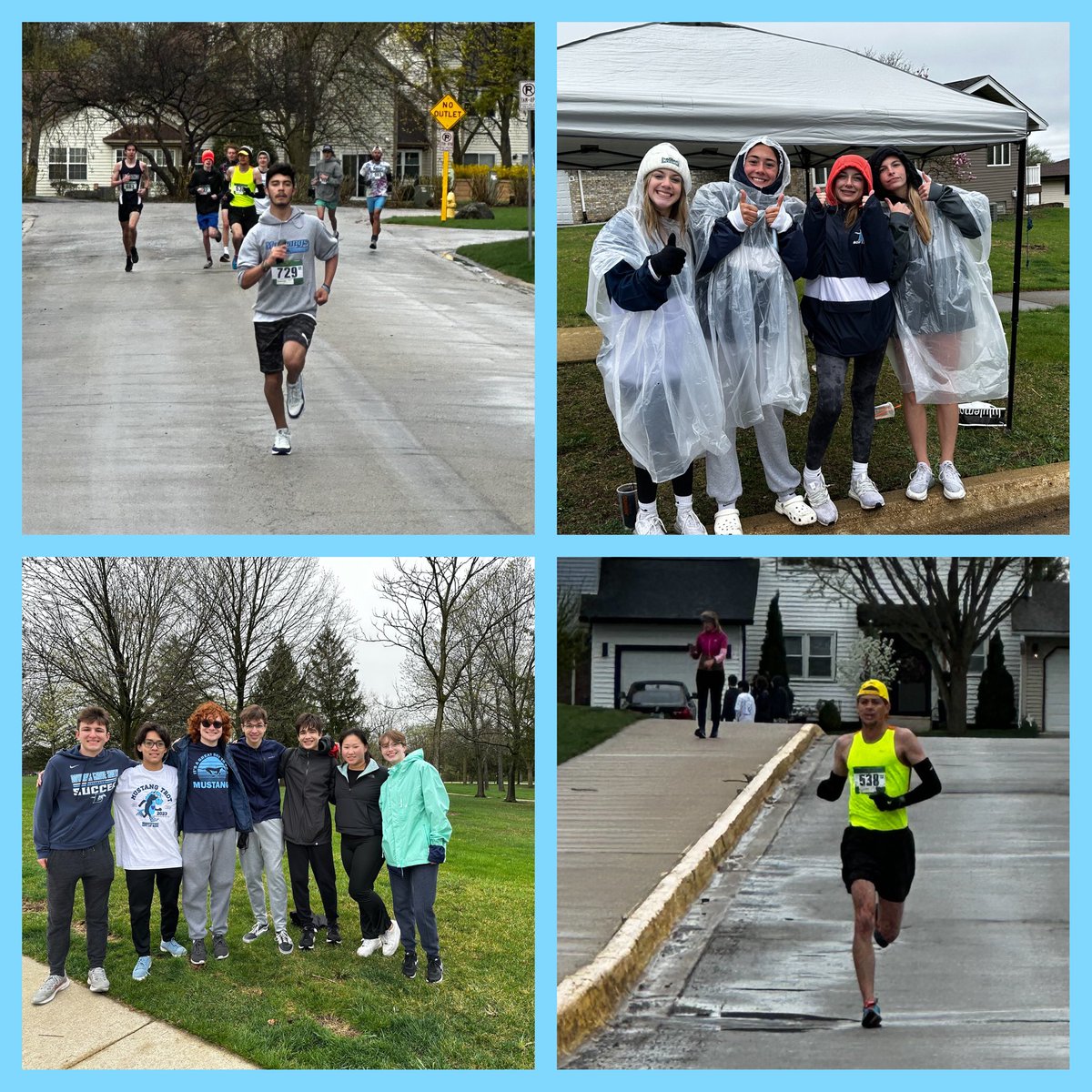What Does 5K Mean in Running?
A 5K is a popular running distance, equivalent to 3.1 miles. This abbreviation originates from the metric system, with “5K” standing for “5 kilometers.” In the running world, 5K races are often considered beginner-friendly, as they offer a manageable distance for newcomers while still providing a challenge for seasoned runners. The 5K distance is an excellent starting point for those looking to improve their fitness, build endurance, or simply enjoy the camaraderie of a group run. With proper training, dedication, and the right mindset, completing a 5K can be a rewarding and fulfilling experience for runners of all skill levels.
Breaking Down the 5K Distance: A Step-by-Step Analysis
Tackling a 5K run requires a strategic approach, especially for those new to the distance. Breaking down the 5K into smaller segments can help runners manage their pace, conserve energy, and maintain motivation throughout the race. A common method is to divide the 5K into four equal segments of approximately 1.25 kilometers (or 0.75 miles) each. This approach allows runners to focus on shorter, more manageable distances while still maintaining a steady pace for the entire race.
The first segment should be used to warm up and settle into a comfortable rhythm. It’s essential to start at a sustainable pace, as starting too fast can lead to fatigue and poor performance later in the race. The second segment is an opportunity to maintain or slightly increase the pace, focusing on form and breathing techniques. During the third segment, runners should assess their energy levels and adjust their pace accordingly. If they feel strong, they can push the pace slightly; if they’re starting to feel fatigued, they should focus on maintaining their current pace and conserving energy for the final segment.
The final segment, or the last 1.25 kilometers (0.75 miles), is the time to give it all you’ve got. This is the home stretch, and runners should dig deep and draw on their mental and physical reserves to finish strong. Utilizing motivational techniques, such as visualization or positive self-talk, can help runners power through this final segment and cross the finish line with a sense of accomplishment.
Preparing for a 5K: Essential Training Tips
Embarking on a 5K journey requires careful planning and dedication. By following these essential training tips, runners can set themselves up for success and ensure a positive race experience.
1. Create a Training Schedule: Develop a structured training plan that gradually increases in distance and intensity. Aim to include at least three runs per week, with one longer run, one shorter, faster-paced run, and one easy, recovery run. Include rest days to allow the body to recover and adapt to the increased workload.
2. Incorporate Cross-Training: Engage in non-running activities, such as swimming, cycling, or strength training, to improve overall fitness and reduce the risk of injury. Cross-training can also help prevent boredom and mental burnout during the training process.
3. Track Progress: Keep a training log to monitor improvements, setbacks, and overall progress. Tracking distance, time, and pace can help identify areas for improvement and provide a sense of accomplishment as milestones are reached.
4. Stay Consistent: Consistency is key when training for a 5K. Aim to stick to the training schedule as closely as possible, but be flexible and adjust as needed based on individual needs and circumstances. Life happens, and sometimes missing a run or two is unavoidable. The important thing is to get back on track as soon as possible.
5. Listen to the Body: Pay attention to signs of fatigue, pain, or injury. If experiencing discomfort, take rest days or modify the training plan as needed. It’s essential to differentiate between normal muscle soreness and potential injury.
6. Seek Support: Join a local running group or find an accountability partner to help stay motivated and engaged throughout the training process. Having a support system can make the journey more enjoyable and rewarding.
Gearing Up: Choosing the Right Running Shoes and Gear for a 5K
Proper running shoes and gear can significantly impact a runner’s comfort, performance, and overall enjoyment during a 5K race. By investing in the right equipment, runners can minimize the risk of injury, enhance their running experience, and focus on achieving their goals.
1. Running Shoes: Selecting the right running shoes is crucial for a successful 5K. Visit a specialty running store to receive a professional fitting and advice on shoe types based on individual foot shape, running style, and biomechanics. A well-fitted, supportive shoe can help prevent injuries and ensure a more enjoyable running experience.
2. Clothing: Opt for moisture-wicking, breathable fabrics to keep cool and dry during the run. Avoid cotton, as it tends to retain moisture and can cause discomfort or chafing. Dress in layers to accommodate changing temperatures and allow for easy removal of clothing as the body warms up.
3. Accessories: Additional gear, such as a running belt, hydration pack, or headphones, can enhance the running experience. A running belt can securely hold essentials like keys, ID, and energy gels, while a hydration pack ensures easy access to water during longer runs. High-quality headphones provide motivation and entertainment without sacrificing sound quality or safety.
4. Safety Gear: Reflective clothing or accessories are essential for runners who train in low-light conditions. Visibility vests, armbands, or clip-on lights can help ensure safety and peace of mind during early morning or evening runs.
5. Weather-Appropriate Gear: Be prepared for various weather conditions by investing in gear like hats, gloves, or waterproof jackets. These items can help protect against the elements and maintain comfort during inclement weather.
Fueling Your Run: Nutrition and Hydration Strategies for 5K Success
Proper nutrition and hydration play a critical role in 5K performance, ensuring optimal energy levels, endurance, and recovery. By following these guidelines, runners can develop a comprehensive fueling plan tailored to their individual needs and goals.
1. Pre-Run Fueling: Consume a balanced meal containing carbohydrates, protein, and healthy fats 2-3 hours before the run. This meal should be easily digestible and provide sustained energy throughout the run. Examples include whole-grain toast with avocado and eggs or a bowl of oatmeal with fruit and nuts.
2. During-Run Fueling: For runs longer than 60 minutes, consider consuming energy gels, chews, or sports drinks to maintain energy levels. These products provide quick-digesting carbohydrates, electrolytes, and sometimes caffeine to help sustain performance and prevent bonking. Follow the manufacturer’s guidelines for consumption frequency and quantity.
3. Post-Run Fueling: Refuel within 30-60 minutes of the run to promote muscle recovery and glycogen replenishment. Aim for a 3:1 or 4:1 carbohydrate-to-protein ratio, such as a banana with a scoop of protein powder or a smoothie made with Greek yogurt, berries, and almond milk.
4. Hydration: Staying properly hydrated is crucial for maintaining optimal performance and preventing dehydration. Drink water or sports drinks before, during, and after the run, adjusting the quantity based on individual needs and weather conditions. Monitor hydration levels by checking urine color, aiming for a pale yellow color.
5. Individualized Fueling Plans: Every runner is unique, and individual needs may vary based on factors like body weight, fitness level, and environmental conditions. Experiment with different fueling strategies during training to determine what works best and make adjustments as needed.
Staying Motivated: Inspiration and Encouragement for 5K Achievers
Staying motivated during 5K training can be challenging, but incorporating inspiring stories, personal testimonials, and mental preparation techniques can help maintain focus and determination. Here are some strategies to keep runners motivated and engaged throughout their 5K journey:
1. Set Clear Goals: Establish specific, measurable, achievable, relevant, and time-bound (SMART) goals for the 5K. This can include target finish times, personal records, or simply completing the race. Having clear objectives can provide a sense of direction and purpose, fueling motivation and commitment.
2. Find a Running Buddy: Partnering with a friend or family member who shares similar goals can help maintain motivation and accountability. Running together can also provide a social outlet, making the training process more enjoyable and less daunting.
3. Incorporate Visualization Techniques: Visualizing a successful 5K finish, overcoming obstacles, or achieving personal bests can help build mental resilience and confidence. By regularly practicing visualization, runners can develop a stronger mind-body connection and enhance their overall performance.
4. Share Progress with Others: Documenting and sharing training progress with friends, family, or online communities can foster a sense of accomplishment and accountability. Receiving positive feedback and encouragement from others can also serve as a powerful motivator during challenging times.
5. Draw Inspiration from Others: Read inspiring stories of athletes who have overcome adversity, set records, or achieved remarkable feats. These stories can provide a source of motivation and demonstrate the power of perseverance, dedication, and hard work.
6. Stay Positive and Flexible: Maintain a positive attitude and be prepared to adapt the training plan as needed. Life can be unpredictable, and staying flexible and open to change can help prevent burnout, frustration, or disappointment.
Celebrating Your Success: Post-5K Activities and Rewards
Completing a 5K is a significant achievement that deserves recognition and celebration. By participating in post-race events, treating yourself to rewards, and setting new running goals, you can honor your accomplishment and maintain the momentum for future endeavors. Here are some ideas to celebrate your 5K success:
1. Attend a Post-Race Event: Many 5K races offer post-race festivities, such as food, drinks, live music, and vendor expos. These events provide an opportunity to mingle with fellow runners, share stories, and enjoy the atmosphere of celebration.
2. Treat Yourself to a Reward: Acknowledge your hard work and dedication by indulging in a well-deserved treat. This could be a massage, a new running outfit, or a fun activity that you’ve been wanting to try. Rewarding yourself can serve as motivation and reinforcement for your efforts.
3. Share Your Achievement: Share your 5K experience with friends, family, and social media networks. Expressing gratitude and appreciation for the support you received during training can help strengthen relationships and foster a sense of community.
4. Document Your Journey: Create a visual representation of your 5K journey by compiling photos, race bibs, and medals in a scrapbook or digital album. This memento can serve as a reminder of your accomplishment and inspire you to continue setting and achieving running goals.
5. Set a New Running Goal: Build on your 5K success by setting a new running goal, such as improving your time, completing another 5K, or progressing to a longer distance, like a 10K or half marathon. Establishing a new objective can help maintain motivation and provide a sense of direction for your running journey.
6. Connect with the Running Community: Join local running clubs, attend group runs, or participate in online forums to connect with other runners. Sharing your experiences, seeking advice, and learning from others can help deepen your passion for running and provide valuable insights for future success.
Expanding Your Running Horizons: Beyond the 5K
Completing a 5K is a significant accomplishment, but it’s only the beginning of your running journey. Progressing to longer distances, such as 10Ks, half marathons, or marathons, can provide numerous benefits, including increased endurance, mental resilience, and a sense of achievement. Here’s how to expand your running horizons beyond the 5K:
1. Assess Your Readiness: Before progressing to longer distances, evaluate your current fitness level, running experience, and overall health. Gradually increasing your mileage and incorporating cross-training can help build the necessary endurance and strength for longer races.






